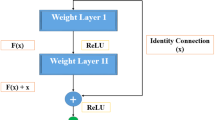Abstract
Recognizing human activity is important for interpersonal interactions and human-to-human communication. It is challenging to extract since it contains details about a person’s identity, personality, and psychological condition. One of the key research topics in the fields of computer vision and machine learning is the human capacity for activity recognition. This study has led to the need for a multimodal activity identification system in several applications, such as video surveillance systems, human-computer interaction, and robots for characterizing human behavior. In this study, Residual Neural Network (ResNet50) and Recurrent Neural Network (RNN) architectures for human activity recognition (HAR) are compared. Our assessment is based on a number of performance metrics, such as accuracy F1-score, recall, and computational effectiveness. Here we have the model accuracy of ResNet50 at 53% and RNN at 23% with epoch 10. Our objective is to evaluate how well the models can categorize various human activities. The outcomes demonstrate that ResNet50 outperformed RNN.
Access this chapter
Tax calculation will be finalised at checkout
Purchases are for personal use only
Similar content being viewed by others
References
Attal F, Mohammed S, Dedabrishvili M, Chamroukhi F, Oukhellou L, Amirat Y (2015) Physical human activity recognition using wearable sensors. Sensors 15(12):31314–31338. https://doi.org/10.3390/s151229858
Shaikh MB, Chai D (2021) RGB-D data-based action recognition: a review. Sensors 21(12):4246. https://doi.org/10.3390/s21124246
Vaughn A, Biocco P, Liu Y, Anwar M (2018) Activity detection and analysis using smartphone sensors. In: 2018 IEEE international conference on information reuse and integration (IRI). https://doi.org/10.1109/iri.2018.00022
Khan IU, Afzal S, Lee JW (2022) Human activity recognition via hybrid deep learning based model. Sensors 22(1):323. https://doi.org/10.3390/s22010323
Ali Mazumder MS, Hossain T, Mehedi Shamrat FM, Jahan N, Tasnim Z, Khater A (2022) Deep learning approaches for diabetic retinopathy detection by image classification. In: 2022 3rd international conference on smart electronics and communication (ICOSEC). https://doi.org/10.1109/icosec54921.2022.9952159
Sutradhar A, Tajmen S, Dhaly A, Mehedi Shamrat FM., Talukder MS, Khater A (2022) Skin cancer classification and early detection on cell images using multiple convolution neural network architectures. In: 2022 3rd international conference on smart electronics and communication (ICOSEC). https://doi.org/10.1109/icosec54921.2022.9952115
Hossain T, Jahan N, Mazumder MS, Islam R, Javed Mehedi Shamrat FM, Khater A (2022) COVID-19 detection through deep learning algorithms using chest X-ray images. In: 2022 3rd international conference on smart electronics and communication (ICOSEC). https://doi.org/10.1109/icosec54921.2022.9951879
Javed Mehedi Shamrat FM, Tasnim Z, Chowdhury TR, Shema R, Uddin MS, Sultana Z (2022) Multiple cascading algorithms to evaluate performance of face detection. Pervas Comput Soc Network 89–102. https://doi.org/10.1007/978-981-16-5640-8_8
Alzubaidi L, Zhang J, Humaidi AJ, Al-Dujaili A, Duan Y, Al-Shamma O, Santamaría J, Fadhel MA, Al-Amidie M, Farhan L (2021) Review of deep learning: concepts, CNN architectures, challenges, applications, future directions. J Big Data 8(1). https://doi.org/10.1186/s40537-021-00444-8
Ordóñez F, Roggen D (2016) Deep Convolutional and LSTM recurrent neural networks for multimodal wearable activity recognition. Sensors 16(1):115. https://doi.org/10.3390/s16010115
Singh NK, Suprabhath KS (2021) HAR using Bi-directional LSTM with RNN. In: 2021 international conference on emerging techniques in computational intelligence (ICETCI). https://doi.org/10.1109/icetci51973.2021.9574073
Goutte C, Gaussier E (2005) A probabilistic interpretation of precision, recall and F-score, with implication for evaluation. Lect Notes Comput Sci 345–359. https://doi.org/10.1007/978-3-540-31865-1_25
Choudhary K, DeCost B, Chen C, Jain A, Tavazza F, Cohn R, Park CW, Choudhary A, Agrawal A, Billinge SJ, Holm E, Ong SP, Wolverton C (2022) Recent advances and applications of deep learning methods in materials science. npj Comput Mater 8(1). https://doi.org/10.1038/s41524-022-00734-6
Human action recognition dataset (nd) Kaggle: your machine learning and data science community. https://www.kaggle.com/datasets/shashankrapolu/human-action-recognition-dataset
Chen L, Nugent CD, Wang H (2012) A knowledge-driven approach to activity recognition in smart homes. IEEE Trans Knowl Data Eng 24(6):961–974. https://doi.org/10.1109/tkde.2011.51
Zahisham Z, Lee CP, Lim KM (2020) Food recognition with resnet-50. In: 2020 IEEE 2nd international conference on artificial intelligence in engineering and technology (IICAIET). https://doi.org/10.1109/iicaiet49801.2020.9257825
Wang M, Gong X (2020) Metastatic cancer image binary classification based on Resnet model. In: 2020 IEEE 20th international conference on communication technology (ICCT). https://doi.org/10.1109/icct50939.2020.9295797
Akter S, Shamrat FM, Chakraborty S, Karim A, Azam S (2021) COVID-19 detection using deep learning algorithm on chest X-ray images. Biology 10(11):1174. https://doi.org/10.3390/biology10111174
Shiranthika C, Premakumara N, Chiu H, Samani H, Shyalika C, Yang C (2020) Human activity recognition using CNN & LSTM. In: 2020 5th international conference on information technology research (ICITR). https://doi.org/10.1109/icitr51448.2020.9310792
Author information
Authors and Affiliations
Corresponding author
Editor information
Editors and Affiliations
Rights and permissions
Copyright information
© 2024 The Author(s), under exclusive license to Springer Nature Singapore Pte Ltd.
About this paper
Cite this paper
Anu, K.P., Bibal Benifa, J.V. (2024). Human Activity Recognition a Comparison Between Residual Neural Network and Recurrent Neural Network. In: Sharma, H., Chakravorty, A., Hussain, S., Kumari, R. (eds) Artificial Intelligence: Theory and Applications. AITA 2023. Lecture Notes in Networks and Systems, vol 844. Springer, Singapore. https://doi.org/10.1007/978-981-99-8479-4_9
Download citation
DOI: https://doi.org/10.1007/978-981-99-8479-4_9
Published:
Publisher Name: Springer, Singapore
Print ISBN: 978-981-99-8478-7
Online ISBN: 978-981-99-8479-4
eBook Packages: Intelligent Technologies and RoboticsIntelligent Technologies and Robotics (R0)




